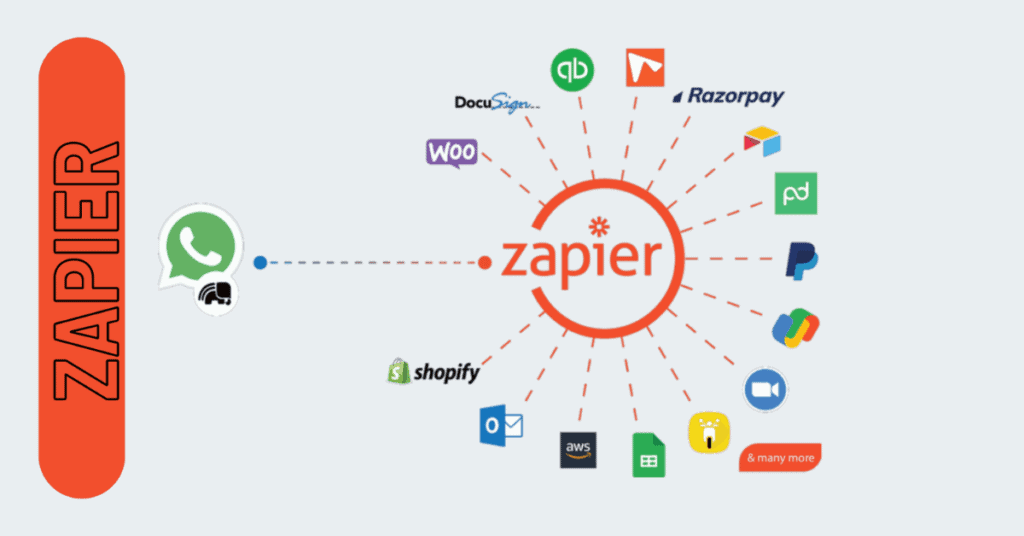Remote Work Trends 2024: Treasure of Insights and Predictions
Still wearning the pajamas at your desk in 2️⃣ 0️⃣ 2️⃣ 4️⃣ ?
Us too! 🤪
Working from home isn’t going anywhere, but how we do it is definitely evolving. From tech that keeps us connected to new work styles, get ready for a sneak peek at the hottest work-from-home trends taking over 2024.
We’re talking hybrid work options, surprising industries going remote, and maybe even some ways to avoid those dreaded video call wardrobe malfunctions (because, let’s be real, comfort is king!).
So ditch the snooze button, grab your coffee (or tea, no judgment!), and get ready to explore the wild world of remote work trends 2024! 😈

Table of Contents
Introduction to Remote work trends in 2024
The Rise of Hybrid Work Models
Benefits of Hybrid Work
Flexibility: Hybrid work models provide employees with the flexibility to choose where they work, whether it’s from the comfort of their home or in a traditional office setting. This flexibility allows individuals to better balance their professional and personal lives, leading to increased job satisfaction and productivity.
Collaboration Opportunities: By combining remote and in-office work, hybrid models facilitate opportunities for collaboration and teamwork. Employees can leverage technology to communicate and collaborate seamlessly, regardless of their physical location. This fosters creativity, innovation, and knowledge sharing among team members.
Cost Savings: Hybrid work models can result in cost savings for both employees and employers. Remote work reduces commuting expenses, such as fuel and transportation costs, while also decreasing overhead expenses for companies, such as office space and utilities. This cost-effectiveness benefits individuals and organizations alike.
Talent Acquisition and Retention: Offering hybrid work options enhances an organization’s ability to attract and retain top talent. By providing flexibility and autonomy, companies can appeal to a broader pool of candidates, including those who value remote work opportunities. Additionally, existing employees may feel more satisfied and loyal when given the freedom to work in a way that suits their preferences.
Resilience and Adaptability: Hybrid work models promote resilience and adaptability in the face of unforeseen circumstances, such as natural disasters or public health emergencies. With remote work infrastructure in place, organizations can seamlessly transition between in-person and remote work arrangements, ensuring business continuity and minimizing disruptions.
Challenges of Hybrid Work
Communication Disparities: Hybrid work models can exacerbate communication disparities between remote and in-office employees. Remote workers may feel isolated or excluded from important conversations and decision-making processes that occur in the office. Addressing this challenge requires proactive efforts to ensure equitable communication channels and opportunities for remote participation.
Technology Integration: Integrating technology seamlessly into hybrid work environments can be challenging. Organizations must invest in robust digital infrastructure and collaboration tools to facilitate effective communication and collaboration across dispersed teams. Additionally, ensuring equal access to technology and technical support for all employees is essential for maintaining productivity and engagement.
Cultural Divide: Hybrid work models may exacerbate existing cultural divides within organizations. Differences in work styles, communication preferences, and organizational norms between remote and in-office employees can lead to misunderstandings or conflicts. Building a cohesive company culture that values diversity, inclusion, and collaboration is critical for overcoming this challenge.
Managerial Oversight: Managing hybrid teams requires a shift in managerial approaches to accommodate varying work arrangements. Managers must adapt their leadership styles to effectively support and empower remote and in-office employees alike. Providing clear expectations, regular feedback, and opportunities for professional development is essential for fostering team cohesion and performance.
Work-Life Balance: While hybrid work models offer flexibility, they can also blur the boundaries between work and personal life. Remote employees may struggle to disconnect from work and establish boundaries, leading to burnout or decreased well-being. Employers must prioritize employee well-being by promoting work-life balance initiatives, encouraging time off, and setting realistic expectations for workload management.
Advancements in Remote Collaboration Tools
Virtual Reality Integration
Immersive Meetings: VR technology allows remote teams to conduct meetings in virtual spaces that mimic real-world environments, such as conference rooms or interactive workspaces. Participants can interact with each other’s avatars, share documents, and engage in discussions as if they were physically present, enhancing communication and teamwork.
Collaborative Design Sessions: VR platforms enable remote teams to collaborate on design projects in immersive virtual environments. Designers can visualize concepts, iterate on prototypes, and receive real-time feedback from team members, facilitating creativity and innovation. VR tools offer features such as 3D modeling, spatial design, and interactive simulations, empowering teams to bring their ideas to life collaboratively.
Training and Simulation: VR technology is transforming remote training and simulation experiences across industries. From virtual classrooms to interactive simulations, VR enables immersive learning experiences that enhance engagement, retention, and skill development. Remote teams can undergo virtual training sessions, practice hands-on tasks, and simulate real-world scenarios in a safe and controlled environment, improving learning outcomes and performance.
AI-driven Productivity Tools
Virtual Assistants: AI-powered virtual assistants, such as chatbots and voice-activated interfaces, help remote workers streamline tasks, access information, and manage schedules more efficiently. Virtual assistants can answer questions, schedule meetings, and perform routine administrative tasks, freeing up time for employees to focus on higher-value work.
Predictive Analytics Platforms: AI-driven predictive analytics platforms analyze data patterns and trends to provide insights into workflow optimization, resource allocation, and performance metrics. Remote teams can leverage predictive analytics to forecast demand, identify opportunities for improvement, and make data-driven decisions that enhance productivity and efficiency.
Automated Workflows: AI-powered automation tools streamline repetitive tasks and workflows, reducing manual effort and minimizing errors in remote work processes. From document processing to email management, automated workflows enable remote teams to increase throughput, reduce turnaround times, and improve overall productivity.
Flexible Work Policies
Importance of Flexibility
Work-Life Balance: Flexible work policies enable employees to better balance their professional responsibilities with personal commitments, such as caregiving, education, or pursuing hobbies and interests. By allowing individuals to customize their work schedules and arrangements, organizations promote well-being and reduce stress, leading to higher job satisfaction and retention rates.
Increased Productivity: Providing flexibility in how and when work is performed can lead to increased productivity among employees. By accommodating individual work preferences and peak performance times, organizations empower employees to work more efficiently and effectively, resulting in improved outcomes and performance metrics.
Talent Attraction and Retention: Flexible work policies are increasingly becoming a key factor in attracting and retaining top talent. In today’s competitive job market, offering flexibility demonstrates an organization’s commitment to supporting work-life balance and accommodating diverse needs. This can give companies a competitive edge in recruiting highly skilled professionals and retaining valuable employees.
Adaptability to Change: Flexible work arrangements enhance organizational adaptability and resilience in the face of change and uncertainty. Whether responding to global events, market fluctuations, or individual circumstances, organizations with flexible policies can quickly adjust work arrangements to meet evolving needs, maintaining business continuity and employee engagement.
Inclusive Work Culture: Flexible work policies foster an inclusive work culture where employees feel valued, respected, and empowered to perform at their best. By recognizing and accommodating diverse needs, such as those related to health, family, or personal preferences, organizations create an environment where all employees can thrive and contribute their unique talents and perspectives.
Strategies for Implementing Flexible Work Policies
Clear Communication: Transparent communication is essential when introducing flexible work policies. Clearly communicate the objectives, guidelines, and expectations associated with flexible work arrangements to all employees. Address any concerns or questions they may have and ensure they understand how flexibility will be implemented and supported.
Define Flexibility Parameters: Establish clear parameters for flexibility, including options for remote work, flexible hours, compressed workweeks, and alternative work arrangements. Define eligibility criteria, such as job roles, performance expectations, and operational requirements, to ensure consistency and fairness in policy implementation.
Technology Infrastructure: Invest in robust technology infrastructure and remote work tools to support flexible work arrangements. Provide employees with access to reliable internet connections, communication platforms, collaboration tools, and security protocols necessary for remote work. Ensure training and technical support are available to help employees navigate remote work environments effectively.
Performance Management: Align performance management practices with flexible work policies to maintain accountability and productivity. Set clear performance goals and expectations for remote and flexible workers, establish regular check-ins and feedback mechanisms, and leverage performance metrics to monitor progress and outcomes. Recognize and reward employees who demonstrate success in flexible work arrangements.
Flexibility Training: Offer training and resources to help managers and employees adapt to flexible work arrangements successfully. Provide guidance on time management, communication best practices, remote collaboration techniques, and maintaining work-life balance in a flexible work environment. Encourage open dialogue and continuous feedback to address challenges and identify opportunities for improvement.
Flexibility Assessment: Regularly evaluate the effectiveness of flexible work policies and their impact on employee satisfaction, productivity, and organizational performance. Solicit feedback from employees through surveys, focus groups, or one-on-one discussions to understand their experiences and identify areas for improvement. Use data and insights gathered to refine and optimize flexible work policies over time.
Focus on Employee Well-being
Mental Health Support
Access to Counseling Services: Offer access to mental health resources, such as counseling services, employee assistance programs (EAPs), or virtual therapy sessions, to support employees’ emotional well-being and provide avenues for seeking help and support.
Mindfulness Programs: Implement mindfulness programs or wellness initiatives that promote stress reduction, relaxation techniques, and mental resilience. Offer virtual mindfulness sessions, meditation apps, or online resources to help employees manage stress and improve their overall well-being.
Flexible Scheduling: Provide flexibility in work schedules to accommodate employees’ mental health needs. Allow for breaks throughout the day, flexible start and end times, or compressed workweeks to support work-life balance and reduce feelings of overwhelm or exhaustion.
Work-Life Balance Initiatives
Clear Expectations: Communicate clear expectations regarding work hours, availability, and response times to help employees manage their workload and set boundaries between work and personal time.
Encourage Time Off: Encourage employees to take regular breaks, vacation days, and time off to recharge and rejuvenate. Create a culture that values rest and relaxation, and lead by example by prioritizing your own well-being and time away from work.
Wellness Activities: Offer wellness activities or initiatives that promote physical activity, healthy habits, and self-care practices. Organize virtual fitness challenges, wellness workshops, or team-building activities that foster camaraderie and support employees’ overall health and well-being.
Flexible Policies: Implement flexible policies that accommodate employees’ personal responsibilities and commitments. Allow for flexibility in meeting schedules, deadlines, and work arrangements to accommodate diverse needs and preferences.
Supportive Leadership: Foster a supportive and empathetic leadership culture that prioritizes employees’ well-being and encourages open communication. Provide opportunities for employees to voice their concerns, seek guidance, and share feedback on work-related stressors or challenges.
Global Talent Pool
Access to a diverse talent pool is one of the key advantages of remote work for organizations. Here’s a closer look at two important aspects of leveraging the global talent pool
Access to Diverse Talent
Geographical Diversity: Remote work enables organizations to recruit talent from different regions, cities, and countries, allowing them to access a broader pool of candidates with diverse perspectives, experiences, and cultural backgrounds.
Skill Diversity: Remote work facilitates access to specialized skills and expertise that may not be readily available locally. Organizations can leverage remote talent to fill niche roles, address skill gaps, and bring unique perspectives to their teams, enhancing innovation and problem-solving capabilities.
Inclusion and Representation: Remote work promotes inclusivity and representation by providing opportunities for individuals from underrepresented groups, such as women, minorities, and individuals with disabilities, to participate in the workforce. Remote work eliminates barriers to entry, such as commuting challenges or geographic limitations, allowing diverse talent to contribute and succeed on an equal footing.
Challenges in Managing Global Teams
Communication Barriers: Differences in time zones, languages, and cultural norms can create communication barriers within global teams. Organizations must implement strategies to facilitate effective communication, such as using language translation tools, scheduling overlapping work hours, and fostering a culture of open communication and respect for diverse perspectives.
Team Collaboration: Managing collaboration and teamwork across dispersed teams requires careful coordination and alignment. Organizations must invest in remote collaboration tools, project management platforms, and virtual team-building activities to foster collaboration, trust, and cohesion among remote team members.
Cultural Nuances: Cultural differences and nuances can impact team dynamics, decision-making processes, and work styles within global teams. Organizations must promote cultural sensitivity, awareness, and inclusivity to create an environment where all team members feel valued, respected, and empowered to contribute their best work.
Leadership and Management: Leading and managing global teams requires adaptive leadership skills and cross-cultural competence. Managers must understand and navigate cultural differences, communicate effectively across diverse teams, and foster a sense of belonging and camaraderie among remote team members.
Cybersecurity Concerns
Remote Work Vulnerabilities
Endpoint Security: Remote employees accessing corporate networks and systems from personal devices or unsecured networks increase the risk of malware infections, data breaches, and unauthorized access. Organizations must implement robust endpoint security measures, such as antivirus software, firewalls, and encryption protocols, to secure remote devices and mitigate security threats.
Phishing Attacks: Remote employees are more susceptible to phishing attacks, social engineering scams, and malicious emails designed to steal sensitive information or compromise credentials. Organizations must educate employees about phishing awareness, implement email filtering and authentication measures, and conduct regular security awareness training to reduce the risk of phishing-related security incidents.
Strategies for Enhancing Cybersecurity
Multi-Factor Authentication (MFA): Implement multi-factor authentication solutions to add an extra layer of security beyond passwords and credentials. MFA requires users to provide multiple forms of verification, such as biometrics or one-time passcodes, to access corporate systems and resources, reducing the risk of unauthorized access.
Encryption and Data Protection: Encrypt sensitive data both in transit and at rest to protect it from unauthorized access or interception. Use encryption protocols, virtual private networks (VPNs), and secure file transfer mechanisms to ensure data confidentiality and integrity in remote work environments.
Regular Security Audits: Conduct regular security audits, vulnerability assessments, and penetration testing to identify and address potential security weaknesses and gaps in remote work infrastructure. Regularly review and update security policies, procedures, and controls to align with evolving cybersecurity threats and regulatory requirements.
Employee Training and Awareness: Provide comprehensive cybersecurity training and awareness programs to educate remote employees about security best practices, threat detection, and incident response procedures. Empower employees to recognize and report security incidents, suspicious activities, or potential security threats in remote work environments.
Importance of Continuous Learning
Skill Development and Adaptation
Technology Skills: Rapid advancements in technology and digital tools necessitate ongoing training and upskilling to ensure employees remain proficient and effective in remote work environments. Continuous learning initiatives can provide employees with opportunities to acquire new technical skills, such as digital collaboration tools, project management software, or cybersecurity protocols.
Professional Development: Remote work offers flexibility and autonomy for employees to pursue professional development opportunities and career advancement. Organizations can support lifelong learning initiatives through access to online courses, webinars, workshops, and certification programs that enhance employees’ knowledge, expertise, and career prospects.
Adaptability and Resilience
Learning Agility: Continuous learning cultivates a growth mindset and learning agility among employees, empowering them to embrace change, experiment with new ideas, and adapt to evolving circumstances. Employees who are open to learning and innovation are better equipped to navigate uncertainty and drive organizational success in remote work environments.
Problem-Solving Skills: Continuous learning initiatives promote critical thinking, problem-solving, and creative thinking skills among employees, enabling them to address complex challenges and find innovative solutions. By fostering a culture of lifelong learning, organizations empower employees to overcome obstacles, seize opportunities, and drive continuous improvement in remote work environments.
Environmental Benefits
Reduced Carbon Footprint
Commute Reduction: Remote work eliminates the need for daily commuting to and from the office, reducing greenhouse gas emissions from cars, buses, and trains. By avoiding traffic congestion and vehicle emissions, remote workers help alleviate air pollution and reduce carbon footprint, leading to cleaner air and improved environmental quality.
Energy Conservation: Remote work reduces energy consumption in office buildings, including electricity, heating, and cooling systems. With fewer employees occupying office spaces, organizations can conserve energy resources and minimize environmental impact, contributing to energy efficiency and conservation efforts.
Promotion of Sustainable Practices
Teleconferencing and Remote Collaboration: Remote work encourages the use of teleconferencing, virtual meetings, and remote collaboration tools to facilitate communication and teamwork among distributed teams. By minimizing the need for business travel and in-person meetings, remote work reduces carbon emissions from transportation and promotes sustainable alternatives to traditional work practices.
Paperless Work Environments: Remote work fosters paperless work environments by promoting digital document management, electronic signatures, and online collaboration platforms. By reducing reliance on paper-based processes and printed materials, remote workers help conserve natural resources, minimize waste generation, and mitigate environmental pollution.
Cultural Shifts
Embracing Diversity and Inclusion
Geographical Diversity: Remote work enables organizations to recruit and hire talent from different regions, cities, and countries, fostering a more geographically diverse workforce. By tapping into diverse talent pools, organizations enrich their teams with varied perspectives, experiences, and cultural insights, enhancing creativity, innovation, and problem-solving capabilities.
Inclusive Work Practices: Remote work promotes inclusive work practices that accommodate diverse needs and preferences, such as flexible work hours, remote accessibility, and cultural sensitivity. By valuing and respecting employees’ individual differences, organizations create an environment where all employees feel valued, respected, and empowered to contribute their best work.
Remote Work's Impact on Company Culture
Results-Oriented Culture: Remote work encourages a results-oriented approach where employees are evaluated based on their contributions and outcomes rather than time spent in the office. This shift in focus promotes accountability, autonomy, and empowerment among employees, fostering a culture of trust and respect.
Flexibility and Work-Life Balance: Remote work promotes flexibility and work-life balance by allowing employees to manage their schedules and priorities according to their individual needs and preferences. Organizations that prioritize work-life balance and employee well-being create a positive and supportive work culture that attracts and retains top talent.
Strategies for Work-Life Balance
Set Boundaries
Designated Workspace: Create a dedicated workspace at home that is separate from your living areas, if possible. This helps create physical boundaries between work and leisure activities, enhancing focus and productivity during work hours.
Set Work Hours: Define specific work hours and stick to them as much as possible. Communicate your availability to colleagues and supervisors, and establish boundaries for when you are “off the clock” to minimize interruptions and maintain a consistent routine.
Take Regular Breaks
Pomodoro Technique: Use the Pomodoro Technique or similar time management methods to work in focused intervals with short breaks in between. This helps maintain concentration and productivity while preventing mental fatigue.
Physical Activity: Incorporate physical activity into your daily routine by taking short walks, stretching breaks, or engaging in home workouts. Physical movement helps reduce stress, improve mood, and boost energy levels throughout the day.
Prioritize Self-Care
Mindfulness Practices: Practice mindfulness meditation, deep breathing exercises, or relaxation techniques to manage stress and promote relaxation. Taking a few minutes each day to focus on your breath and quiet your mind can have a profound impact on your overall well-being.
Healthy Habits: Maintain a healthy lifestyle by eating nutritious meals, staying hydrated, getting adequate sleep, and avoiding excessive caffeine or alcohol consumption. Prioritize activities that promote physical and mental health, such as hobbies, leisure activities, and social connections.
Communicate Boundaries
Family and Household Responsibilities: If you have caregiving responsibilities or other family obligations, communicate your schedule and availability with your household members to ensure mutual understanding and support.
Work-Related Expectations: Set realistic expectations with your colleagues and supervisors regarding your availability, response times, and workload. Clearly communicate your work hours, preferred modes of communication, and any specific needs or constraints you may have.
Disconnect and Unplug
Digital Detox: Set boundaries for digital device usage and establish screen-free periods during your leisure time. Avoid checking work emails or messages outside of designated work hours to prevent work-related stress from encroaching on your personal time.
Create Rituals: Establish end-of-day rituals or routines to signal the transition from work to leisure. This could include shutting down your computer, tidying up your workspace, or engaging in a relaxing activity that helps you unwind and shift your focus away from work.
Future Trends of Remote Work in 2024
Hybrid Work Models
Remote Workforce Expansion
Remote Collaboration Tools
Flexible Work Policies
Focus on Employee Well-being
Cybersecurity and Data Privacy
Global Talent Acquisition
*** Conclusion ***
Frequently Asked Questions
How can organizations ensure cybersecurity in remote work environments?
What are the benefits of hybrid work models?
How can employees maintain work-life balance while working remotely?
What are the key challenges of managing global remote teams?
How can organizations promote employee well-being in remote work environments?
Will work from home continue in 2024?
What is the future of remote work?
What is the remote work rate in the US?
What is the trend of hybrid working?
How will COVID-19 permanently affect remote work trends?
COVID-19 forced a remote work experiment. The future likely holds:
More remote options: Companies see benefits and may offer lasting remote work opportunities.
Hybrid is key: A blend of office and remote work might become the norm for flexibility and collaboration.
Tech focus: Expect advancements in tools to support a seamless remote experience.
















